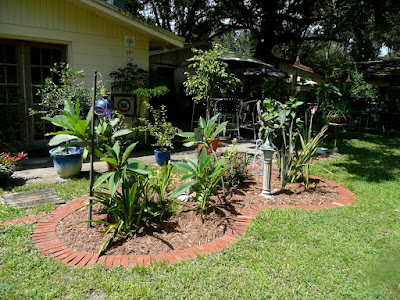calm post
It's finally warm weather and we're cleaning up the yard. There are a gazillion oak leaves and 500 bazillion acorns everywhere.
It seems there is a tool for picking up all of those acorns. I knew someone must have invented a nut-picker-upper. The folks at the local home improvement store had never heard of such a thing. "Sounds like a good idea", they said. Our acorns are small, and the description on Amazon doesn't say exactly what size nuts it picks up. We may continue to rake and shovel them.
Of course, the leaves go into the compost bin. Acorns will sprout and grow, so we can't put those in the compost. We've had a compost bin for years. We keep adding kitchen scraps to it and leaves and turning it and at one time it was 1/2 full, and now it's just a couple of inches of not really great stuff to use on the garden.
We discovered that we are doing a couple of things incorrectly.
It is about 2.5 feet square and 3 feet high and has doors at the bottom from which you can remove the finished compost. It has a cover over the top. We positioned it in a sunnier area of the back yard and started with about 4 inches of the half composted compost from our older bin. Then a layer of garden soil and sprinkled on some bone meal to get the microbes going.
What NOT to add to the compost:
Wet grass, meat, fats, bones, fish, dairy products, cooking oil, pet waste.
DO add:
Leaves, dry grass, weeds (not seeding), soft plant stems, fruit and vegetable matter, crushed egg shells, tea bags, coffee grounds and filters. I've got a nice porcelain container by the kitchen sink for kitchen waste.
I hope to have useable compost in about 2 months. Compost tea can be made to feed the potted plants.
A good book on the subject of compost is Compost: the natural way to make food for your garden by Kenneth Thompson.
 |
| From Blogger Pictures |
Of course, the leaves go into the compost bin. Acorns will sprout and grow, so we can't put those in the compost. We've had a compost bin for years. We keep adding kitchen scraps to it and leaves and turning it and at one time it was 1/2 full, and now it's just a couple of inches of not really great stuff to use on the garden.
We discovered that we are doing a couple of things incorrectly.
- The bin was a bit large for the amount of waste we were adding.
- We were turning it too often, not allowing decomposition to do the work of breaking down the organic matter.
- We didn't monitor the level of water in the compost. If it rained...fine. If it was dry, we didn't add water.
 |
| From Blogger Pictures |
What NOT to add to the compost:
Wet grass, meat, fats, bones, fish, dairy products, cooking oil, pet waste.
DO add:
Leaves, dry grass, weeds (not seeding), soft plant stems, fruit and vegetable matter, crushed egg shells, tea bags, coffee grounds and filters. I've got a nice porcelain container by the kitchen sink for kitchen waste.
I hope to have useable compost in about 2 months. Compost tea can be made to feed the potted plants.
A good book on the subject of compost is Compost: the natural way to make food for your garden by Kenneth Thompson.
 |
| From Blogger Pictures |

Comments